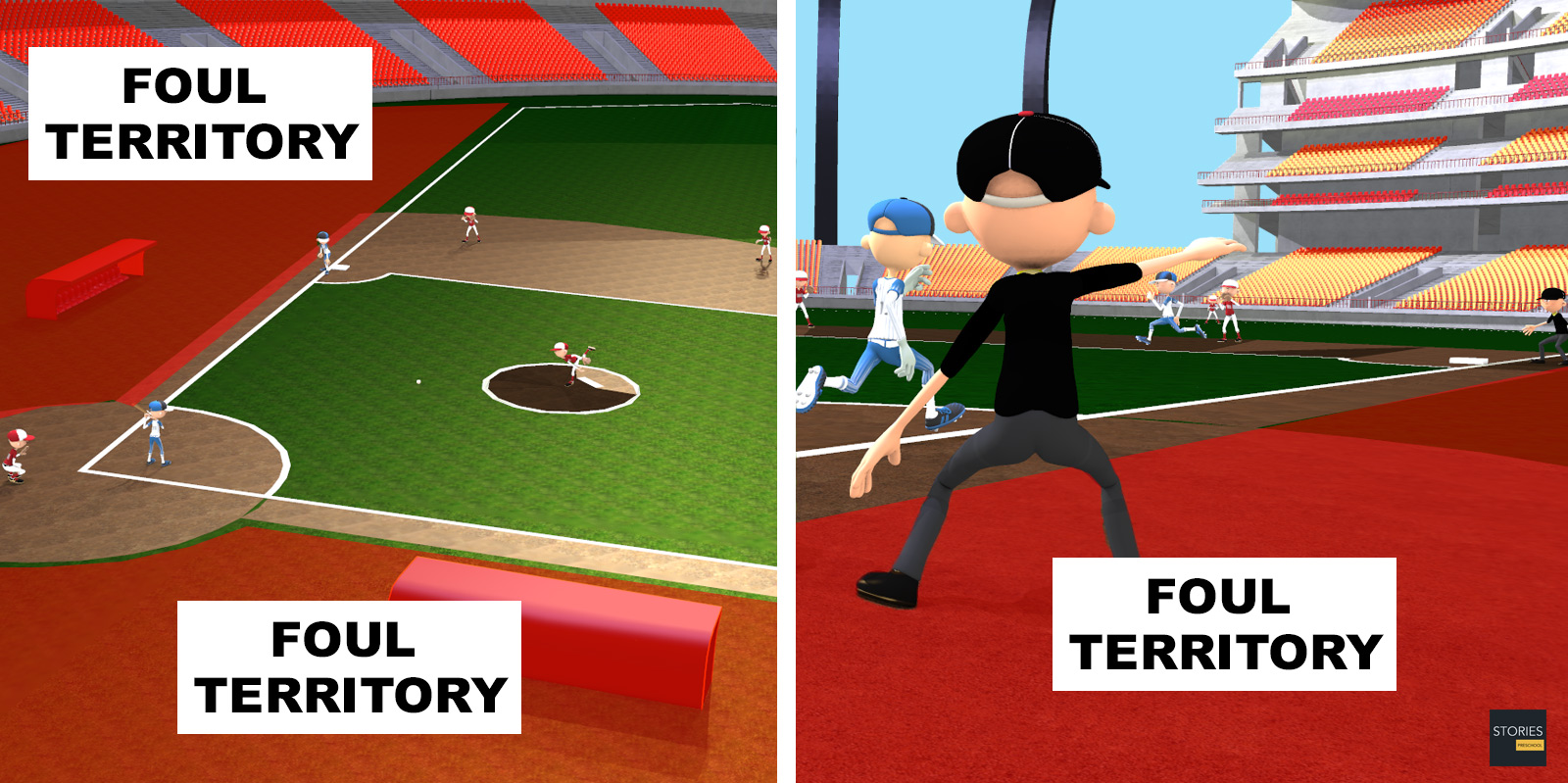Baseball

Baseball Foul Ball
In baseball, a foul ball is a batted ball that:
- Settles on foul territory between home and first base or between home and third base, or
- Bounds past first or third base on or over foul territory, or
- First falls on foul territory beyond first or third base, or
- While on or over foul territory, touches the person of an umpire or player, or any object foreign to the natural ground.

A foul fly shall be judged according to the relative position of the ball and the foul line, including the foul pole, and not as to whether the fielder is on foul or fair territory at the time he touches the ball.
Foul territory or foul ground is defined as the area of the field outside of the foul lines. The foul lines and foul poles are not part of foul territory.
In general, when a batted ball is ruled a foul ball, the ball is dead, all runners must return to their time-of-pitch base without liability to be put out, and the batter returns to home plate to continue his turn at bat. A strike is issued for the batter if he had fewer than two strikes. If the batter already has two strikes against him when he hits a foul ball, a strike is not issued unless the ball was bunted to become a foul ball, in which case a third strike is issued and a strikeout recorded for the batter and pitcher. A strike is, however, recorded for the pitcher for every foul ball the batter hits, regardless of the count.
Rules in Covered Facilities
In a retractable or fixed roof baseball facility, a batted ball is a foul ball if it:
- strikes the roof, roof support structure, or objects suspended from the roof (ex. lights, speakers) in fair territory and lands in foul territory
- becomes lodged in any of those objects in foul territory and does not fall back to the playing field
Rules vary from stadium to stadium for a ball striking the roof or suspended object in foul territory. Some consider such a ball to still be in flight, while others consider it a foul ball and dead from the time it strikes.
A ball that hits the roof or a suspended object in fair territory is in play. If it gets stuck in fair territory, it is ruled a ground rule double, and all runners advance two bases.
Strategies
On rare occasions, such as in extra innings or the ninth inning of a tie game when a runner is on third base, fielders have been known to let long foul flies drop rather than risk losing the game on a sacrifice fly. Sometimes, in that situation, a fielder will not try to catch a ball that is close to the foul line in the hope that the ball will go foul at the last second—neither catching the ball nor letting it drop would prevent a defeat.
In different situations, a foul ball may be considered a positive or negative outcome of a pitch or swing. When there are zero or one strike, a foul ball counts as a strike, benefiting the pitcher. However, a foul ball may reveal to the batter that he has timed a pitch well and need only make adjustment to the location of his swing on the next such pitch; this is often called a good cut or simply a good swing.
Foul balls with two strikes are generally considered positive for the batter, since he thus avoids strike three on a potentially difficult pitch. Also, foul balls with two strikes increase the pitcher's pitch count, adding to his/her fatigue, thus providing some small advantage to the offense. A strategy of swinging on any ball to try to produce additional fouls and prolong an at-bat is often used against strong pitchers to try to drive them from the game sooner (and also the possibility of the pitcher throwing a pitch a hitter can get a hit on); this does, however, have the disadvantage of generating more strikeouts.

SPORTS

RESOURCES
This article uses material from the Wikipedia articles "Baseball" and "Foul ball", which is released under the Creative Commons Attribution-Share-Alike License 3.0.
© Stories Preschool. All Rights Reserved.












